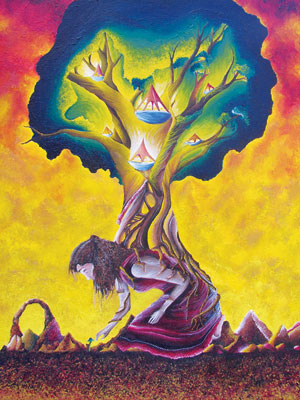All Nonfiction
- Bullying
- Books
- Academic
- Author Interviews
- Celebrity interviews
- College Articles
- College Essays
- Educator of the Year
- Heroes
- Interviews
- Memoir
- Personal Experience
- Sports
- Travel & Culture
All Opinions
- Bullying
- Current Events / Politics
- Discrimination
- Drugs / Alcohol / Smoking
- Entertainment / Celebrities
- Environment
- Love / Relationships
- Movies / Music / TV
- Pop Culture / Trends
- School / College
- Social Issues / Civics
- Spirituality / Religion
- Sports / Hobbies
All Hot Topics
- Bullying
- Community Service
- Environment
- Health
- Letters to the Editor
- Pride & Prejudice
- What Matters
- Back
Summer Guide
- Program Links
- Program Reviews
- Back
College Guide
- College Links
- College Reviews
- College Essays
- College Articles
- Back
Marie Curie, a strong female figure
Since the day I decided to present Marie Curie as a key figure of World War I for a school project in the third grade, she has been one of my heroes...
Marie Curie, born Marya Sklowdowska in 1867 grew up in Warsaw, Poland as the youngest and fifth child of two teachers. Brilliant student from the beginning, after attending the clandestine Flying University because regular institutions didn't let women in, she worked as a governess to be able to get the financial resource she needed, to pursue her higher education dreams in Paris. Self-tutored in the mean-time, she then started her practical scientific training at the Museum of Industry and Agriculture near Warsaw's Old Town.
She finally left Poland for France in 1891 staying with her sister and her brother-in-law for awhile before moving out and occasionally fainting from hunger and cold. She was planning to go back to Poland after her studies. She studied physics, chemistry and mathematics at the University of Paris during the day, and tutored in the evening. With already two degrees in physics in 1894, Marie starts her scientific career with a research on the magnetic properties of different steels. Meeting Pierre Curie the same year, the two scientists got married in 1895, Marie wearing a dark blue laboratory outfit.
In 1895 with Roentgen discovering the existence of X-rays, and Becquerel's work on uranium, Curie hypothesized that the radiation was coming from the atom itself and not from the interaction of different molecules-this step was important to demonstrate later on that the atoms were not indivisible-. Teaching at École Normale Supérieure, she continued to experiment with X-rays, unaware of the harmfulness of radiation exposure. Her work with her husband revolutionized the scientific world, the economy, the societies; making a new way of living possible.
She was awarded with her doctorate from the University of Paris and became a published scientist in 1903. When invited to the Royal Institution in London with her husband to give a speech on radioactivity, she was not allowed to participate to the event because she was a woman.
In december 1903, she received, along with Pierre Curie and Becquerel, the Nobel Prize in Physics. Marie wasn't nominated at first, but after the remark of an advocate of woman scientists and the complaint of Pierre Curie, her name was added to the nomination. Marie Curie was the first woman to be awarded a Nobel Prize.
She died in 1934 because of her longterm exposure to radiation; for her passion.
Marie Curie is my hero, because she played and still plays an enormous role in the emancipation of women; her determination, curiosity, bravery, selflessness, and intelligence makes her a role model for everyone on this planet and especially for women. She has received tributes from all across the world and inspires many to pursue their dreams no matter how hard they seem to be to be accomplished and pushes me for example to be a better person. Showing the patriotic societies in the 19th Century, how powerful women can be in one of the best ways possible, she makes me want to make her proud and continue to keep fighting to defend her legacy.

Similar Articles
JOIN THE DISCUSSION
This article has 0 comments.
